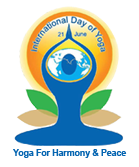PRITHVI (Prithvi Vigyan)
The central sector scheme of “Prithvi Vigyan (PRITHVI)” is an umbrella scheme by merging the existing five schemes “Atmosphere & Climate Research-Modelling Observing Systems & Services (ACROSS)”, “Ocean Services, Modelling Application, Resources and Technology (O-SMART)”, “Polar Science and Cryosphere Research (PACER)”, “Seismology and Geosciences (SAGE)” and “Research, Education, Training and Outreach (REACHOUT)”.
Sub-schemes: There are five sub-schemes under the PRITHVI umbrella scheme that are implemented by various institutions under the MoES. The sub-schemes along with the unit implementing them are as follows:
ACROSS
The objectives include:
- Deploy and sustain the state-of-the-art observing systems to monitor weather, climate and ocean parameters
- Generate and disseminate a suite of weather and climate information, advisories, warnings, data and data products to various stakeholders for the benefit of society.
- Carry out research and development activities to develop and improve the capability to forecast weather, climate and hazard-related phenomena for societal, economic and environmental benefits.
- Carry out research and development related to the Science of climate change and develop climate services.







 Ministry of Earth Sciences
Ministry of Earth Sciences














